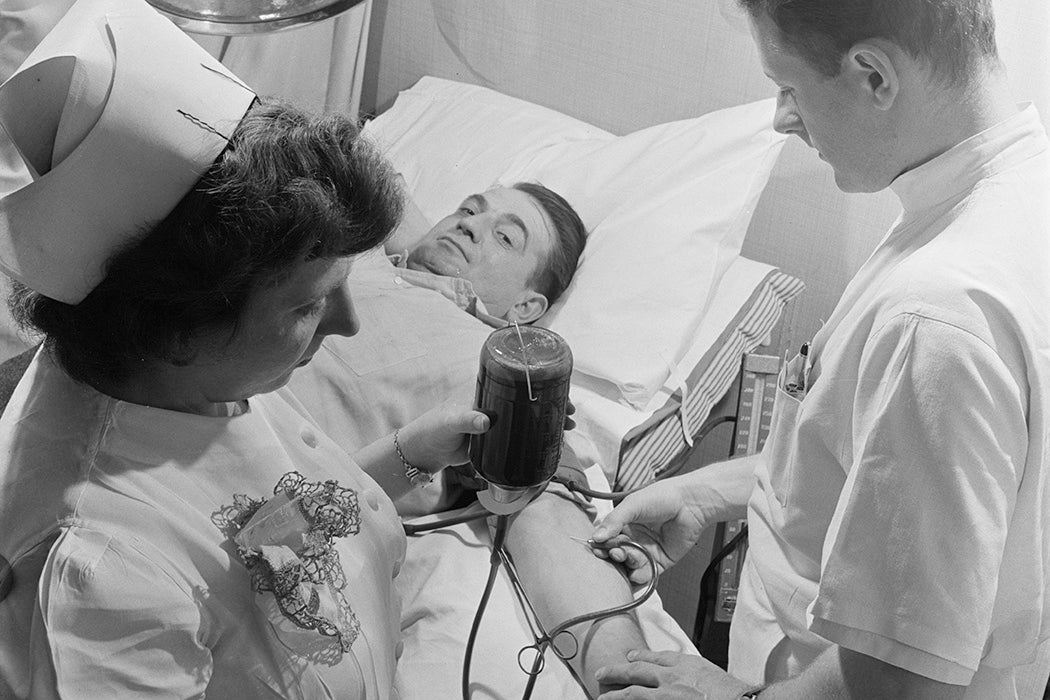Most of us today probably don’t think much about our blood type, if we remember it at all. But when the concept was new, early in the twentieth century, blood types became part of the culture in a variety of odd ways, as science historian Susan E. Lederer explains.
Blood transfusions go back a long time, but up through the nineteenth century, natural scientists didn’t think blood differed among people—or, perhaps, even among different species. But, Lederer writes, in 1900 Austrian immunologist Karl Landsteiner discovered that human blood was actually quite complicated. Mixing serum from one person and red blood cells from another might cause the cells to clump up, in ways that turned out to be predictable. Landsteiner invented the first blood typology, with types A, B, C, and AB. Physicians in other parts of the world independently discovered the same thing around the same time, though they used different naming systems.
Immediately, some researchers attempted to use these new ideas to validate scientific racism. In 1907, German doctor Carl Bruck claimed to be able to distinguish the blood of various racial groups: Caucasians, Negroes, Malayans, Chinese, and Arabs. Despite a continual lack of success confirming such findings, Lederer writes, over the next several decades, “medical literature continued to foster enthusiasm that definitive racialized tests, including one to distinguish the blood of Gentiles from Jews, would one day be found.”
The real science of blood types did have medical value. Doctors gradually began applying it to blood transfusions, learning, for example, that a mother was not necessarily a safe source for her infant. In the 1920s, American newspapers started running stories about blood transfusions that mentioned the importance of compatible blood types.
Lederer writes that once doctors determined that blood types were inherited, people seized on them to investigate possible cases of baby-switching at hospitals, as well as paternity disputes. One of the most famous cases came in 1946, when actress Joan Berry claimed Charlie Chaplin was the father of her child. Chaplin’s legal team determined that he couldn’t be the father since his blood type was O, Berry’s was A, and the child’s was B.
Weekly Newsletter
World War II brought personal awareness of one’s blood type to the U.S. masses. Soldiers wore their type on their dog tags. Civilians learned theirs when they donated blood for the troops. In the Cold War era that followed, the veterans group AMVETS and many cities and states focused on encouraging Americans to wear dog tags to address “the tremendous needs of whole blood that would follow in the wake of atomic bombing,” as the New York Times put it in 1950. Some experts called for mass tattooing as a more certain method. In Indiana, thousands of people actually received such tattoos.
That’s probably a step few of us would take today, even if we do find it difficult to remember our type.
Support JSTOR Daily! Join our new membership program on Patreon today.







